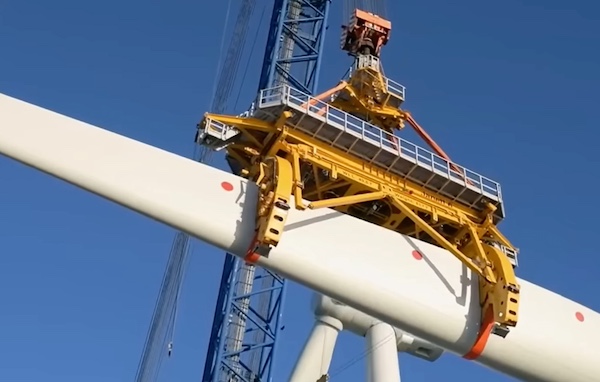
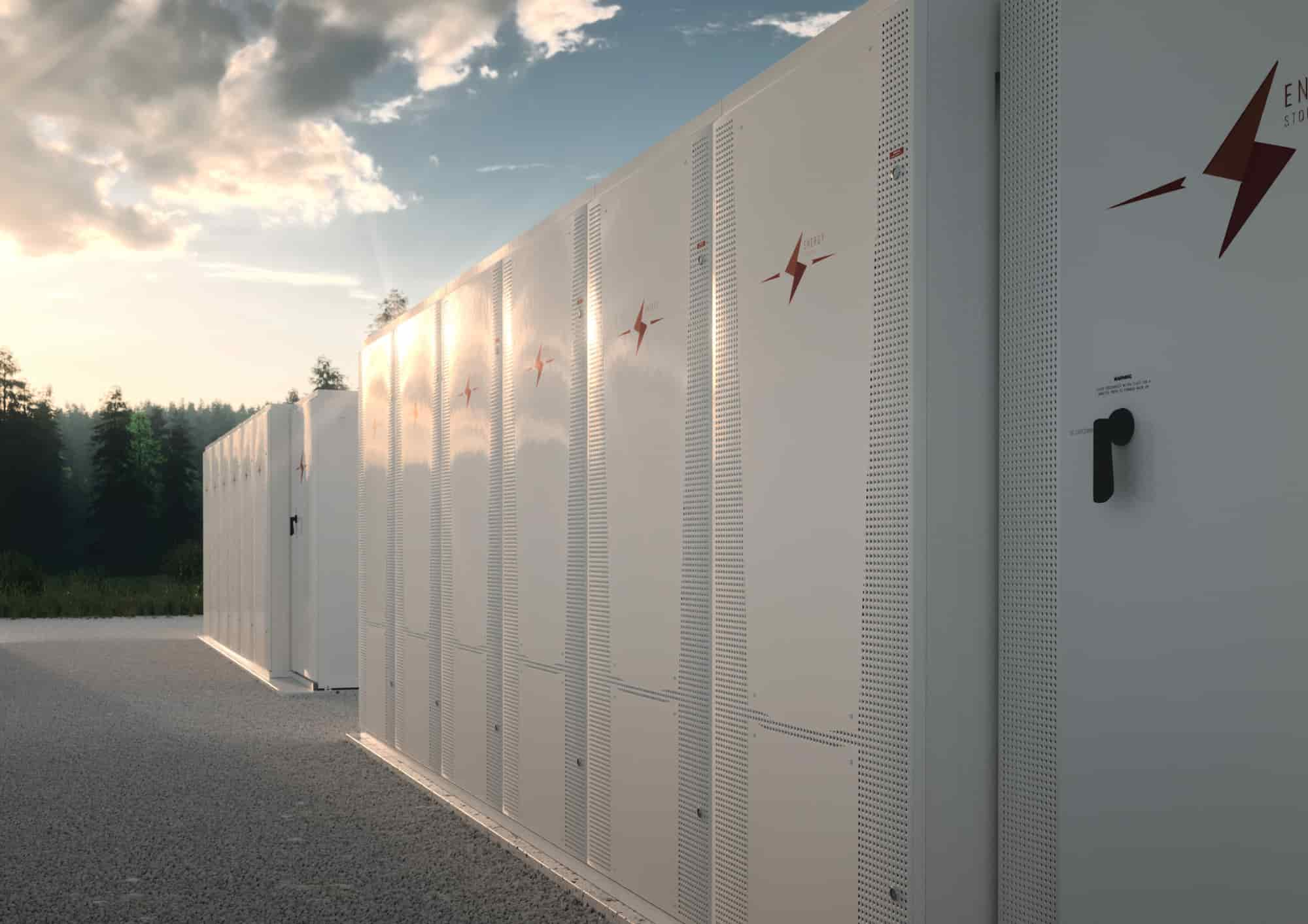
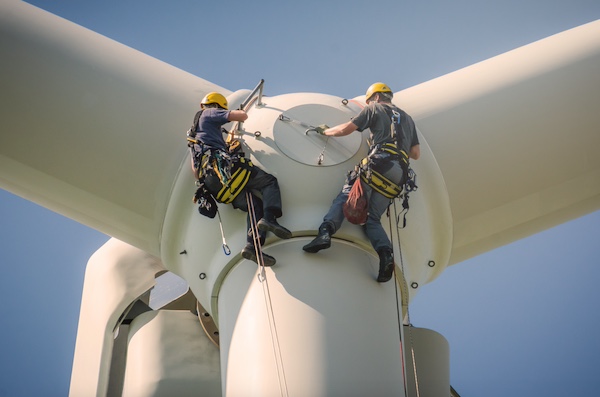

Ava Community Energy (Ava), one of the nation's top clean energy providers, announced its plans to expand access to public EV charging stations across its service territory. As part of the energy provider's new partnership with Calibrant Energy (a joint venture between Macquarie and Siemens Financial Services), Ava will deploy 86 public direct-current fast-chargers (DCFC) across 11 sites in six cities. Ava's partnership with Calibrant comes on the heels of the provider's 2023 partnership with EV Realty, which will build 32 additional chargers in downtown Oakland, demonstrating an ongoing commitment to driving access to electric mobility resources and infrastructure across Northern California.
"The partnership between Calibrant Energy and Ava is another step closer to making the energy transition more achievable. As demand grows, this is an exciting time for EVs, and collaborations like this will ensure success. Calibrant is proud to support Ava's commitment to lowering the barriers consumers may face with EVs and charging stations," says Matt Walz, CEO at Calibrant Energy.
To help expedite California's goals for decarbonized transportation, Ava is proactively taking innovative steps to scale the adoption of zero-emission vehicles (ZEVs). Through a first-of-its-kind procurement approach that mirrors power purchase agreements (PPAs) traditionally used for wind, solar and battery storage projects, Ava is utilizing an energy tolling agreement structure to finance its EV charging network, paying a monthly fixed, capacity-based fee to deploy Ava charging stations across its service territory.
Ava's partners Calibrant Energy and EV Realty will help develop up to the first 11 fast-charging hubs of Ava's DC fast-charging network, which will be located across Hayward, Livermore, Oakland, Piedmont, Pleasanton and San Leandro. Ava's DC fast-chargers will be powered using its Renewable 100 service – which is certified by the California Air Resource Board (CARB) as a zero carbon intensity (CI) transportation fuel – and will be available to the public twenty-four-seven. The charging partnership with Calibrant Energy is slated to come online in 2025, and Ava's EV Realty partnership plans to see project completion by the end of 2024. Ava plans to continue building publicly available fast chargers to give residents access to affordable electric vehicle charging.
To help bridge the gap to widespread, reliable and affordable charging infrastructure for underserved communities, Ava will locate all EV fast-charging sites in publicly accessible municipal parking lots, garages and right-of-way parking spaces near "multifamily hotspots" – areas with dense concentrations of renters, who make up nearly 50 percent of Ava's customers. Additionally, each charging station will be located in proximity to local businesses and services for increased convenience.
"It is a critical time to make sure we are supporting the adoption of EVs," said Nick Chaset, CEO at Ava Community Energy. "While people are talking about scaling zero-emission transportation, we are putting steel in the ground to deploy the projects that will positively move the needle on our collective energy future."
Calibrant Energy | www.calibrantenergy.com
Ava Community Energy | https://avaenergy.org/

The hydrogen detection market for is estimated to be around US$ 145 million in 2024 to US$ 800 million by 2034. The market is anticipated to rise at an 11.50% CAGR over the next decade.
Download the Sample PDF report to explore key market insights and trends: https://www.futuremarketinsights.com/reports/sample/rep-gb-18119
In the last few years, it has been observed that the adoption of hydrogen detection equipment is experiencing an excellent surge across various industries due to its ability to ensure worker safety and prevent accidents. In manufacturing industries, hydrogen detection is crucial, especially in facilities where hydrogen is used or produced. The sales of hydrogen detection equipment are also increasing in chemical plants to monitor leaks, prevent explosions, and maintain safe working conditions.
The oil and gas sector is one of the largest consumers of hydrogen detection equipment. Companies in this sector primarily use hydrogen detection technologies for safety purposes in hydrocarbon exploration, production, refining, and transportation. Hydrogen detection equipment is also in demand from companies manufacturing hydrogen fuel cell vehicles to ensure safe handling, storage, and utilization of hydrogen fuel.
Increasing emphasis on energy security and diversification to reduce reliance on traditional fossil fuels has led to the growing adoption of hydrogen technologies, including hydrogen detection equipment. Rising demand for hydrogen in sectors like transportation, refining, and chemicals is further fueling the demand for hydrogen detection equipment. Investments in research and development for improving hydrogen detection technologies are also boosting the market growth.
"Continuous innovations and keeping up with the latest trends are essential in this market. Companies in the hydrogen detection market must develop advanced technologies to improve accuracy, sensitivity, and response times. This will ensure they remain competitive, meet evolving industry standards, and address emerging safety challenges effectively," says Nikhil Kaitwade (Associate Vice President at Future Market Insights, Inc.).
Key Takeaways from the Market Study
Competitive Landscape
The hydrogen detection market is highly competitive, with both international and domestic players catering to various industries. Prominent companies such as MSA Safety Incorporated, Drägerwerk AG & Co. KGaA, Honeywell International Inc., and RAE Systems Inc. have established a good reputation by providing high-quality solutions to their customers.
To ensure more sustainable offerings, these companies are investing in greener methodologies for manufacturing and delivering hydrogen detection equipment. With the increasing demand for hydrogen detection solutions, companies are focusing on innovation and strategic partnerships to maintain a competitive edge in the market.
Recent Developments
Purchase now and gain full access to the Hydrogen Detection Industry report, featuring comprehensive Market Forecast, Company Share Analysis, Competition Intelligence, DROT Analysis, Market Dynamics and Challenges, and Strategic Growth Initiatives.
Future Market Insights I https://www.futuremarketinsights.com
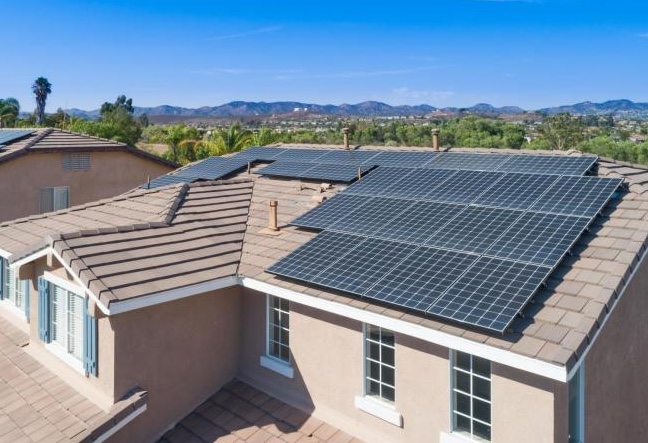
Enstall, the global leader in solar mounting and digital solutions, has joined the Agile Electrification Project (Agile) as a Founding Sponsor. The project, a partnership with the University of California-San Diego and industry leaders, has been launched to help protect California's 17,000 solar jobs by reducing costs and barriers to home electrification. The Agile Electrification Project is initially launching with research projects designed to improve bill calibration modeling, advance accurate customer proposals, and increase homeowner's access to incentives. Enstall is dedicated to supporting continuous innovation and product development to accelerate solar adoption.
"We're delighted to be a founding sponsor of the Agile Electrification Project to help protect solar jobs in California. Initiatives like this fit perfectly with Enstall's efforts to make solar installation fast, safe, and easy. We're dedicated to developing digital tools and hardware that help installers simplify the process of home electrification," said Joris Tinbergen, VP Global Digital at Enstall. "California's new NEM rules will require innovation and new solutions to maintain growth."
"Enstall has shown tremendous industry leadership by supporting the Agile Electrification Project. Their commitment to bringing residential solar contractors into the electrification era is currently laying the foundation for the next era of our industry. We look forward to working with their innovation team to further accelerate this important transformation," said Andrew Krause, CEO Northern Pacific Power Systems and initiator of the Agile Electrification Project.
The Enstall family of brands, IronRidge, EcoFasten, PanelClaw, Esdec, Blubase, CPX, and Sunfer, share the mission to accelerate solar adoption. Enstall's companies invest heavily in research and development to increase the industry's capacity by developing mounting and digital solutions that make solar installation fast, easy, and safe. The company's digital tools have been utilized millions of times by installers to create solutions for every type of roof.
Enstall | https://enstall.com/

The Lion Electric Company (NYSE: LEV) (TSX: LEV) ("Lion" or the "Company"), a leading manufacturer of all-electric medium and heavy-duty urban vehicles, announced a reduction of its workforce, combined with other cost-cutting measures, aimed at further reducing its operating expenses and aligning its cost structure to current market dynamics.
The workforce reduction affects approximately 120 employees, mostly Canada-based employees in overhead and product development functions. The measure should not negatively impact the Company's production capacity. Following this workforce reduction, Lion will have approximately 1,150 employees, including more than 600 manufacturing positions.
In addition to the workforce reduction, Lion continues to undertake internal measures to reduce its cost structure, including in areas such as third-party inventory logistics, lease expenses, consulting, product development and professional fees.
The workforce reduction and cost cutting measures announced today, combined with the measures announced in November 2023 and February 2024, are expected to result in annualized costs savings of approximately $40 million.
"Current market dynamics, notably delays experienced with the Canada's Zero-Emission Transit Fund, continue to adversely impact our school bus deliveries and forced us to further reduce our workforce," said Marc Bedard, CEO-Founder of Lion. "We sincerely regret the impact of this decision on our valued employees. It is however crucial to rightsize our workforce to the current environment. We remain confident in our long-term growth and that of our industry and, keeping our focus on our profitability objectives and our production requirements, we will continue to work tirelessly on the execution of our business plan", he added.
Lion Electric | https://thelionelectric.com/en

Inmotive announced that it will move into the second phase of the joint development agreement with Suzuki to develop an IngearTM 2-speed EV transmission for future Suzuki electric vehicles. The development agreement, executed in January of 2023, was designed to determine viability and compatibility of the Ingear EV transmission with future Suzuki electric vehicles.
"Our teams spent the past year working closely to prepare and validate the Ingear for full implementation into a future EV model," said Paul Bottero, CEO, Inmotive. "The first phase of development was a meaningful step for both sides, with significant collaboration and approaches to problem solving making steady progress, and we look forward to working jointly on the next phase of development."
The Ingear is the world's most efficient 2-speed transmission designed specifically for EVs, validated by Inmotive test results. Through its compact and simple design, the Ingear can improve electric vehicle cost, range and efficiency. Additionally, an Ingear can extend EV range by up to 15% and improve acceleration by up to 15%. Its patented geometry ensures a smooth and quiet ride.
In addition to EV passenger cars, the Ingear can be built for use in a wider range of vehicles, including motorcycles, ATVs, and marine applications. Suzuki is currently exploring the potential for these applications beyond passenger cars.
"The unique design and performance advantages really lends to a multitude of uses," said Bottero.
Inmotive | www.inmotive.com
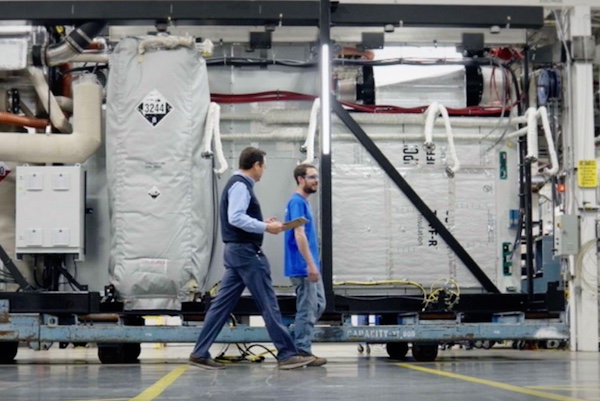
As part of the University of Hartford's sustainability program, the school has partnered with HyAxiom, a leading global fuel cell and hydrogen solutions provider, to install four stationary fuel cells on the southeastern side of the campus. "We at the University of Hartford are thrilled to see the completion of this exciting project that will result in positive environmental impacts to our campus, surrounding neighborhoods and communities," says University of HartfordActing President Stephen Mulready. "While we anticipate significant savings in energy costs over the months and years to come, what the fuel cell means in terms of our future sustainability goals is even more exciting," he says.
"We are pleased to partner with the University of Hartford to offer the campus a reliable, sustainable energy solution," says David Alonso, Chief Commercial Officer at HyAxiom. "These power plants will generate clean, affordable energy to the campus," he says.
The power plants are HyAxiom's flagship product, the PureCell® M400, a proprietary phosphoric acid fuel cell (PAFC)that produces clean energy and heat with a significantly reduced carbon footprint when compared to conventional power plants and can easily be converted to use hydrogen as a fuel. Commissioned in 2020 and recognized globally, the 50 MW (114 units) Daesan hydrogen fuel cell plant in Korea is the world's first and only commercial stationary power plant running solely on hydrogen.
The University's fuel cell units are expected to generate 1.8 MW and will significantly reduce the load on the electrical grid that serves the campus as well as lower the chances of brownouts during times of peak electricity demand. The University also has the option of utilizing the heat byproduct from the units for the nearby East Hall in the future.
With the ability to adjust its power output as demand for electricity fluctuates throughout the day--known as load-following-- HyAxiom's fuel cells have fast become a resilient source of energy mitigating energy capacity and reliability challenges, The low emissions from these fuel cells help to advance air quality and green house gas targets while fitting into existing electrical architecture.
The University of Hartford is embracing the clean energy educational opportunities the fuel cells provide. This summer, students will be able to visit the site to learn more about the alternative energy source and how it relates to the campus sustainability efforts.
This recent fuel cell installation joins the fleet of HyAxiom units operating on campuses throughout Connecticut and the nation as schools look to diversify their energy sources, reduce grid loads increase on-site reliability, and embrace decarbonization. HyAxiom also has fuel cells operating at the University of Connecticut, Western Connecticut State University, Eastern Connecticut State University and Mission College, California.
University of Hartford | hartford.edu
HyAxiom | hyaxiom.com

RTX (NYSE: RTX) announced an agreement with a subsidiary of ENGIE North America (ENGIE) that will provide 100% renewable electricity to 12 of the company's Texas facilities. The agreement with ENGIE Resources LLC, which runs through 2033, will begin with six RTX locations in Texas in 2024 and expand to 12 locations by 2028. The deal is RTX's largest renewable energy procurement to date, nearly doubling the company's usage of renewable electricity in 2023.
"Increasing our use of renewable electricity is a core focus of RTX's strategy to reduce greenhouse gas emissions across our operations," said Annette McNeely, vice president, Environment, Health & Safety for RTX. "This agreement will put RTX on a pathway to achieve its 2025 goal of 10% renewable electricity and its 2030 goal to reduce greenhouse gas emissions by 46% from 2019 levels."
The agreement will provide more than 1.5 million megawatt hours of renewable electricity over the next 10 years, reducing RTX emissions by an estimated 560,000 metric tons of carbon dioxide—equivalent to the annual electricity usage of more than 100,000 homes. The largest site included in the agreement is RTX's Raytheon facility in McKinney, Texas, which produces high-energy lasers, sensors and radars. Under the agreement, the McKinney location will consume more than 55% of the total clean energy procured.
The agreement includes renewable energy certificates (RECs) from ENGIE's Priddy Wind Project, located in Mills County, Texas, for a small portion of RTX's forecasted load in 2024. The remainder of RTX's load for 2024 and beyond will be sourced with electricity and RECs from several ENGIE renewable electricity projects in Texas, primarily new projects. Trio (formerly Edison Energy) served as RTX's clean energy advisor on the agreement helping to identify, negotiate and secure the deal.
"Trio is proud of its collaboration with RTX and to have supported this innovative structure for retail-delivered renewable energy," said Joey Lange, senior managing director, Energy Supply Advisory at Trio. "This initiative was the result of a combined process between multiple business units to make a significant impact on RTX's decarbonization goals."
RTX | https://www.rtx.com/
ENGIE North America | https://www.engie-na.com/
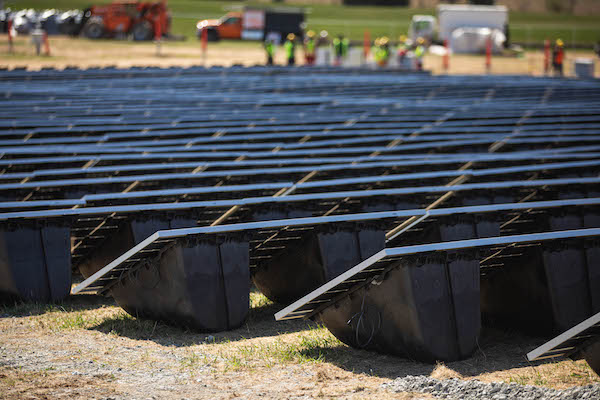
Alternative Energies May 15, 2023
The United States is slow to anger, but relentlessly seeks victory once it enters a struggle, throwing all its resources into the conflict. “When we go to war, we should have a purpose that our people understand and support,” as former Secretary ....

Unleashing trillions of dollars for a resilient energy future is within our grasp — if we can successfully navigate investment risk and project uncertainties.
The money is there — so where are the projects?
A cleaner and more secure energy future will depend on tapping trillions of dollars of capital. The need to mobilize money and markets to enable the energy transition was one of the key findings of one of the largest studies ever conducted among the global energy sector C-suite. This will mean finding ways to reduce the barriers and uncertainties that prevent money from flowing into the projects and technologies that will transform the energy system. It will also mean fostering greater collaboration and alignment among key players in the energy space.
 Interestingly, the study found that insufficient access to finance was not considered the primary cause of the current global energy crisis. In fact, capital was seen to be available — but not being unlocked. Why is that? The answer lies in the differing risk profiles of energy transition investments around the world. These risks manifest in multiple ways, including uncertainties relating to project planning, public education, stakeholder engagement, permitting, approvals, policy at national and local levels, funding and incentives, technology availability, and supply chains.
Interestingly, the study found that insufficient access to finance was not considered the primary cause of the current global energy crisis. In fact, capital was seen to be available — but not being unlocked. Why is that? The answer lies in the differing risk profiles of energy transition investments around the world. These risks manifest in multiple ways, including uncertainties relating to project planning, public education, stakeholder engagement, permitting, approvals, policy at national and local levels, funding and incentives, technology availability, and supply chains.
These risks need to be addressed to create more appealing investment opportunities for both public and private sector funders. This will require smart policy and regulatory frameworks that drive returns from long-term investment into energy infrastructure. It will also require investors to recognize that resilient energy infrastructure is more than an ESG play — it is a smart investment in the context of doing business in the 21st century.
Make de-risking investment profiles a number one priority
According to the study, 80 percent of respondents believe the lack of capital being deployed to accelerate the transition is the primary barrier to building the infrastructure required to improve energy security. At the same time, investors are looking for opportunities to invest in infrastructure that meets ESG and sustainability criteria. This suggests an imbalance between the supply and demand of capital for energy transition projects.
How can we close the gap?
One way is to link investors directly to energy companies. Not only would this enable true collaboration and non-traditional partnerships, but it would change the way project financing is conceived and structured — ultimately aiding in potentially satisfying the risk appetite of latent but hugely influential investors, such as pension funds. The current mismatch of investor appetite and investable projects reveals a need for improving risk profiles, as well as a mindset shift towards how we bring investment and developer stakeholders together for mutual benefit. The circular dilemma remains: one sector is looking for capital to undertake projects within their skill to deploy, while another sector wonders where the investable projects are.
This conflict is being played out around the world; promising project announcements are made, only to be followed by slow progress (or no action at all). This inertia results when risks are compounded and poorly understood. To encourage collaboration between project developers and investors with an ESG focus, more attractive investment opportunities can be created by pulling several levers: public and private investment strategies, green bonds and other sustainable finance instruments, and innovative financing models such as impact investing.

Expedite permitting to speed the adoption of new technologies
Another effective strategy to de-risk investment profiles is found in leveraging new technologies and approaches that reduce costs, increase efficiency, and enhance the reliability of energy supply. Research shows that 62 percent of respondents indicated a moderate or significant increase in investment in new and transitional technologies respectively, highlighting the growing interest in innovative solutions to drive the energy transition forward.
Hydrogen, carbon capture and storage, large-scale energy storage, and smart grids are some of the emerging technologies identified by survey respondents as having the greatest potential to transform the energy system and create new investment opportunities. However, these technologies face challenges such as long lag times between conception and implementation.
If the regulatory environment makes sense, then policy uncertainty is reduced, and the all-important permitting pathways are well understood and can be navigated. Currently, the lack of clear, timely, and fit-for-purpose permitting is a major roadblock to the energy transition. To truly unleash the potential of transitional technologies requires the acceleration of regulatory systems that better respond to the nuance and complexity of such technologies (rather than the current one-size-fits all approach). In addition, permitting processes must also be expedited to dramatically decrease the period between innovation, commercialization, and implementation. One of the key elements of faster permitting is effective consultation with stakeholders and engagement with communities where these projects will be housed for decades. This is a highly complex area that requires both technical and communication skills.
The power of collaboration, consistency, and systems thinking
The report also reveals the need for greater collaboration among companies in the energy space to build a more resilient system. The report shows that, in achieving net zero, there is a near-equal split between those increasing investment (47 percent of respondents), and those decreasing investment (39 percent of respondents). This illustrates the complexity and diversity of the system around the world. A more resilient system will require all its components – goals and actions – to be aligned towards a common outcome.
Another way to de-risk the energy transition is to establish consistent, transparent, and supportive policy frameworks that encourage investment and drive technological innovation. The energy transition depends on policy to guide its direction and speed by affecting how investors feel and how the markets behave. However, inconsistent or inadequate policy can also be a source of uncertainty and instability. For example, shifting political priorities, conflicting international standards, and the lack of market-based mechanisms can hinder the deployment of sustainable technologies, resulting in a reluctance to commit resources to long-term projects.
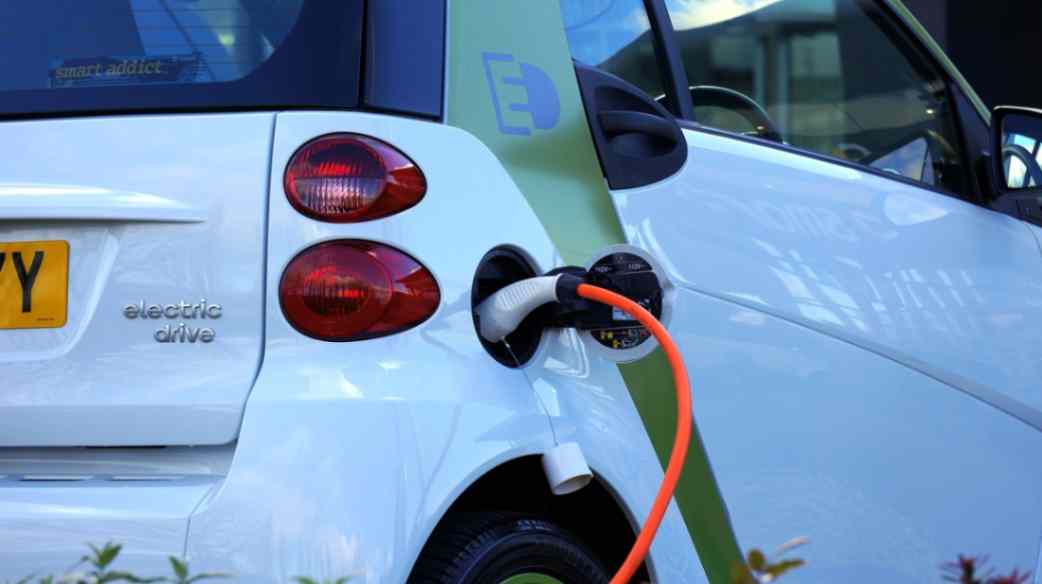
Variations in country-to-country deployment creates disparities in energy transition progress. For instance, the 2022 Inflation Reduction Act in the US has posed challenges for the rest of the world, by potentially channeling energy transition investment away from other markets and into the US. This highlights the need for a globally unified approach to energy policy that balances various national interests while addressing a global problem.
To facilitate the energy transition, it is imperative to establish stable, cohesive, and forward-looking policies that align with global goals and standards. By harmonizing international standards, and providing clear and consistent signals, governments and policymakers can generate investor confidence, helping to foster a robust energy ecosystem that propels the sector forward.
Furthermore, substantive and far-reaching discussions at international events like the United Nations Conference of the Parties (COP), are essential to facilitate this global alignment. These events provide an opportunity to de-risk the energy transition through consistent policy that enables countries to work together, ensuring that the global community can tackle the challenges and opportunities of the energy transition as a united front.
Keeping net-zero ambitions on track
Despite the challenges faced by the energy sector, the latest research reveals a key positive: 91 percent of energy leaders surveyed are working towards achieving net zero. This demonstrates a strong commitment to the transition and clear recognition of its importance. It also emphasizes the need to accelerate our efforts, streamline processes, and reduce barriers to realizing net-zero ambitions — and further underscores the need to de-risk energy transition investment by removing uncertainties.
The solution is collaborating and harmonizing our goals with the main players in the energy sector across the private and public sectors, while establishing consistent, transparent, and supportive policy frameworks that encourage investment and drive technological innovation.
These tasks, while daunting, are achievable. They require vision, leadership, and action from all stakeholders involved. By adopting a new mindset about how we participate in the energy system and what our obligations are, we can stimulate the rapid progress needed on the road to net zero.
Dr. Tej Gidda (Ph.D., M.Sc., BSc Eng) is an educator and engineer with over 20 years of experience in the energy and environmental fields. As GHD Global Leader – Future Energy, Tej is passionate about moving society along the path towards a future of secure, reliable, and affordable low-carbon energy. His focus is on helping public and private sector clients set and deliver on decarbonization goals in order to achieve long-lasting positive change for customers, communities, and the climate. Tej enjoys fostering the next generation of clean energy champions as an Adjunct Professor at the University of Waterloo Department of Civil and Environmental Engineering.
GHD | www.ghd.com
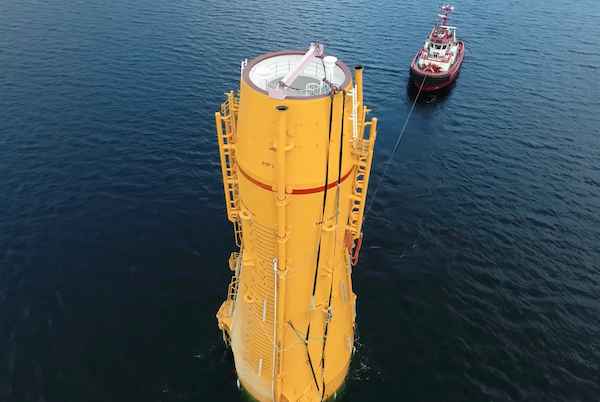
The Kincardine floating wind farm, located off the east coast of Scotland, was a landmark development: the first commercial-scale project of its kind in the UK sector. Therefore, it has been closely watched by the industry throughout its installation. With two of the turbines now having gone through heavy maintenance, it has also provided valuable lessons into the O&M processes of floating wind projects.
In late May, the second floating wind turbine from the five-turbine development arrived in the port of Massvlakte, Rotterdam, for maintenance. An Anchor Handling Tug Supply (AHTS)
vessel was used to deliver the KIN-02 turbine two weeks after a Platform Supply Vessel (PSV) and AHTS had worked to disconnect the turbine from the wind farm site. The towing vessel became the third vessel used in the operation.
This is not the first turbine disconnected from the site and towed for maintenance. In the summer of 2022, KIN-03 became the world’s first-ever floating wind turbine that required heavy maintenance (i.e. being disconnected and towed for repair). It was also towed from Scotland to Massvlakte.
Each of these operations has provided valuable lessons for the ever-watchful industry in how to navigate the complexities of heavy maintenance in floating wind as the market segment grows.

The heavy maintenance process
When one of Kincardine’s five floating 9.5 MW turbines (KIN-03) suffered a technical failure in May 2022, a major technical component needed to be replaced. The heavy maintenance strategy selected by the developer and the offshore contractors consisted in disconnecting and towing the turbine and its floater to Rotterdam for maintenance, followed by a return tow and re-connection. All of the infrastructure, such as crane and tower access, remained at the quay following the construction phase. (Note, the following analysis only covers KIN-03, as details of the second turbine operation are not yet available).
Comparing the net vessel days for both the maintenance and the installation campaigns at this project highlights how using a dedicated marine spread can positively impact operations.
For this first-ever operation, a total of 17.2 net vessel days were required during turbine reconnection—only a slight increase on the 14.6 net vessel days that were required for the first hook-up operation performed during the initial installation in 2021. However, it exceeds the average of eight net vessel days during installation. The marine spread used in the heavy maintenance operation differed from that used during installation. Due to this, it did not benefit from the learning curve and experience gained throughout the initial installation, which ultimately led to the lower average vessel days.
The array cable re-connection operation encountered a similar effect. The process was performed by one AHTS that spent 10 net vessel days on the operation. This compares to the installation campaign, where the array cable second-end pull-in lasted a maximum of 23.7 hours using a cable layer.
Overall, the turbine shutdown duration can be broken up as 14 days at the quay for maintenance, 52 days from turbine disconnection to turbine reconnection, and 94 days from disconnection to the end of post-reconnection activities.
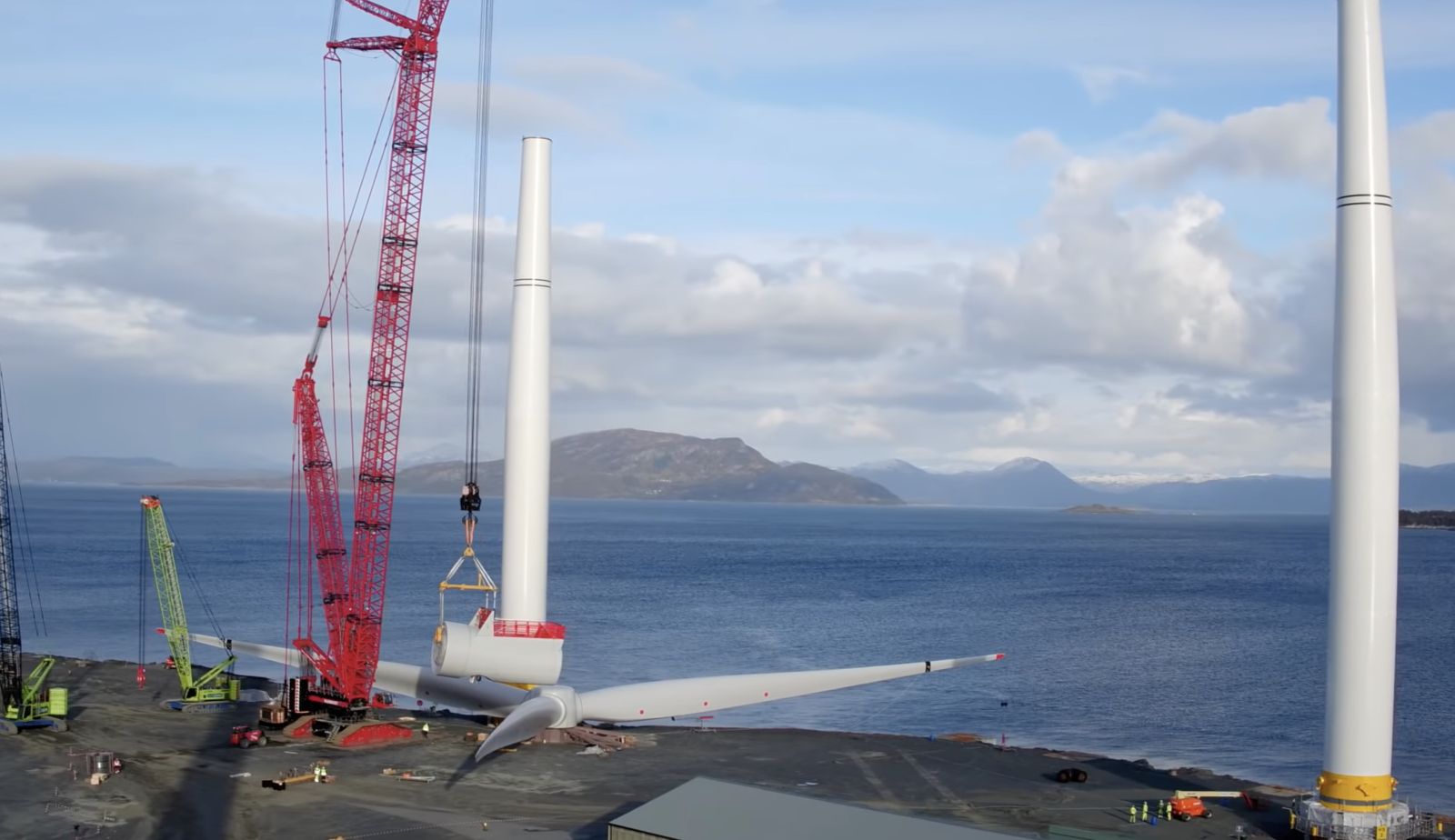
What developers should keep in mind for heavy maintenance operations
This analysis has uncovered two main lessons developers should consider when planning a floating wind project: the need to identify an appropriate O&M port, and to guarantee that a secure fleet is available.
Floating wind O&M operations require a port with both sufficient room and a deep-water quay. The port must also be equipped with a heavy crane with sufficient tip height to accommodate large floaters and reach turbine elevation. Distance to the wind farm should also be taken into account, as shorter distances will reduce towing time and, therefore, minimize transit and non-productive turbine time.
During the heavy maintenance period for KIN-03 and KIN-02, the selected quay (which had also been utilized in the initial installation phase of the wind farm project), was already busy as a marshalling area for other North Sea projects. This complicated the schedule significantly, as the availability of the quay and its facilities had to be navigated alongside these other projects. This highlights the importance of abundant quay availability both for installation (long-term planning) and maintenance that may be needed on short notice.
At the time of the first turbine’s maintenance program (June 2022), the North Sea AHTS market was in an exceptional situation: the largest bollard pull AHTS units contracted at over $200,000 a day, the highest rate in over a decade.
During this time, the spot market was close to selling out due to medium-term commitments, alongside the demand for high bollard pull vessels for the installation phase at a Norwegian floating wind farm project. The Norwegian project required the use of four AHTS above a 200t bollard pull. With spot rates ranging from $63,000 to $210,000 for the vessels contracted for Kincardine’s maintenance, the total cost of the marine spread used in the first repair campaign was more than $4 million.
Developers should therefore consider the need to structure maintenance contracts with AHTS companies, either through frame agreements or long-term charters, to decrease their exposure to spot market day rates as the market tightens in the future.

While these lessons are relevant for floating wind developers now, new players are looking towards alternative heavy O&M maintenance options for the future. Two crane concepts are especially relevant in this instance. The first method is for a crane to be included in the turbine nacelle to be able to directly lift the component which requires repair from the floater, as is currently seen on onshore turbines. This method is already employed in onshore turbines and could be applicable for offshore. The second method is self-elevating cranes with several such solutions already in development.
The heavy maintenance operations conducted on floating turbines at the Kincardine wind farm have provided invaluable insights for industry players, especially developers. The complex process of disconnecting and towing turbines for repairs highlights the need for meticulous planning and exploration of alternative maintenance strategies, some of which are already in the pipeline. As the industry evolves, careful consideration of ports, and securing fleet contracts, will be crucial in driving efficient and cost-effective O&M practices for the floating wind market.
Sarah McLean is Market Research Analyst at Spinergie, a maritime technology company specializing in emission, vessel performance, and operation optimization.
Spinergie | www.spinergie.com

According to the Energy Information Administration (EIA), developers plan to add 54.5 gigawatts (GW) of new utility-scale electric generating capacity to the U.S. power grid in 2023. More than half of this capacity will be solar. Wind power and battery storage are expected to account for roughly 11 percent and 17 percent, respectively.
A large percentage of new installations are being developed in areas that are prone to extreme weather events and natural disasters (e.g., Texas and California), including high wind, tornadoes, hail, flooding, earthquakes, wildfires, etc. With the frequency and severity of many of these events increasing, project developers, asset owners, and tax equity partners are under growing pressure to better understand and mitigate risk.
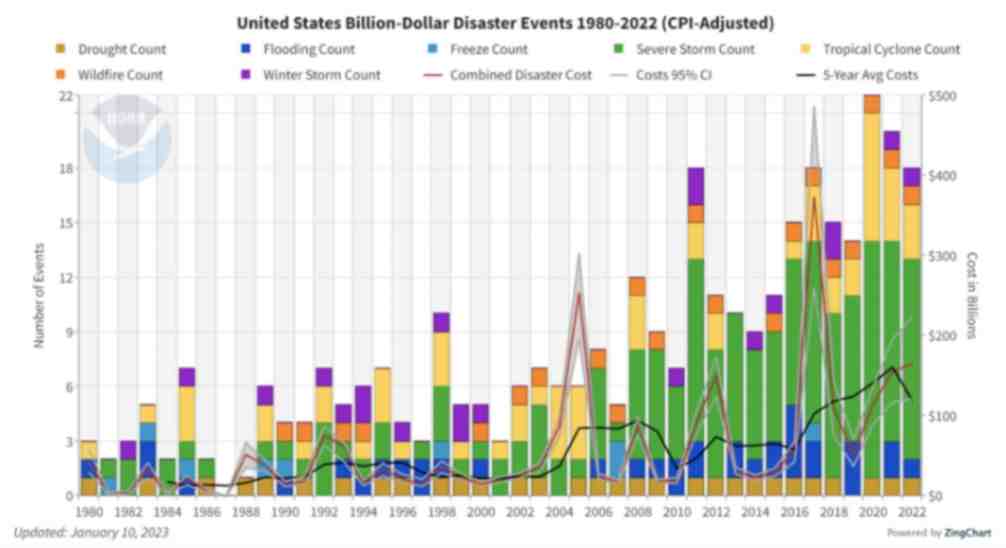
Figure 1. The history of billion-dollar disasters in the United States each year from 1980 to 2022 (source: NOAA)
In terms of loss prevention, a Catastrophe (CAT) Modeling Study is the first step to understanding the exposure and potential financial loss from natural hazards or extreme weather events. CAT studies form the foundation for wider risk management strategies, and have significant implications for insurance costs and coverage.
Despite their importance, developers often view these studies as little more than a formality required for project financing. As a result, they are often conducted late in the development cycle, typically after a site has been selected. However, a strong case can be made for engaging early with an independent third party to perform a more rigorous site-specific technical assessment. Doing so can provide several advantages over traditional assessments conducted by insurance brokerage affiliates, who may not possess the specialty expertise or technical understanding needed to properly apply models or interpret the results they generate. One notable advantage of early-stage catastrophe studies is to help ensure that the range of insurance costs, which can vary from year to year with market forces, are adequately incorporated into the project financial projections.
The evolving threat of natural disasters
Over the past decade, the financial impact of natural hazard events globally has been almost three trillion dollars. In the U.S. alone, the 10-year average annual cost of natural disaster events exceeding $1 billion increased more than fourfold between the 1980s ($18.4 billion) and the 2010s ($84.5 billion).

Investors, insurers, and financiers of renewable projects have taken notice of this trend, and are subsequently adapting their behavior and standards accordingly. In the solar market, for example, insurance premiums increased roughly four-fold from 2019 to 2021. The impetus for this increase can largely be traced back to a severe storm in Texas in 2019, which resulted in an $80 million loss on 13,000 solar panels that were damaged by hail.
The event awakened the industry to the hazards severe storms present, particularly when it comes to large-scale solar arrays. Since then, the impact of convective weather on existing and planned installations has been more thoroughly evaluated during the underwriting process. However, far less attention has been given to the potential for other natural disasters; events like floods and earthquakes have not yet resulted in large losses and/or claims on renewable projects (including wind farms). The extraordinary and widespread effect of the recent Canadian wildfires may alter this behavior moving forward.
A thorough assessment, starting with a CAT study, is key to quantifying the probability of their occurrence — and estimating potential losses — so that appropriate measures can be taken to mitigate risk.
All models are not created equal
Industrywide, certain misconceptions persist around the use of CAT models to estimate losses from an extreme weather event or natural disaster.
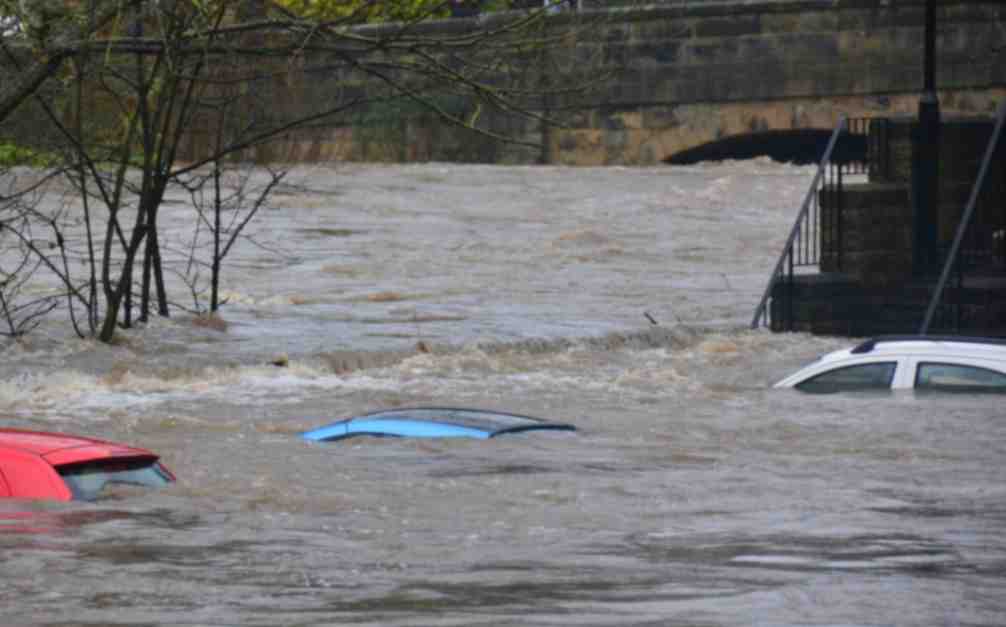
Often, the perception is that risk assessors only need a handful of model inputs to arrive at an accurate figure, with the geographic location being the most important variable. While it’s true that many practitioners running models will pre-specify certain project characteristics regardless of the asset’s design (for example, the use of steel moment frames without trackers for all solar arrays in a given region or state), failure to account for even minor details can lead to loss estimates that are off by multiple orders of magnitude.
The evaluation process has recently become even more complex with the addition of battery energy storage. Relative to standalone solar and wind farms, very little real-world experience and data on the impact of extreme weather events has been accrued on these large-scale storage installations. Such projects require an even greater level of granularity to help ensure that all risks are identified and addressed.
Even when the most advanced modeling software tools are used (which allow for thousands of lines of inputs), there is still a great deal that is subject to interpretation. If the practitioner does not possess the expertise or technical ability needed to understand the model, the margin for error can increase substantially. Ultimately, this can lead to overpaying for insurance. Worse, you may end up with a policy with insufficient coverage. In both cases, the profitability of the asset is impacted.
Supplementing CAT studies
In certain instances, it may be necessary to supplement CAT models with an even more detailed analysis of the individual property, equipment, policies, and procedures. In this way, an unbundled risk assessment can be developed that is tailored to the project. Supplemental information (site-specific wind speed studies and hydrological studies, structural assessment, flood maps, etc.) can be considered to adjust vulnerability models.
This provides an added layer of assurance that goes beyond the pre-defined asset descriptions in the software used by traditional studies or assessments. By leveraging expert elicitations, onsite investigations, and rigorous engineering-based methods, it is possible to discretely evaluate asset-specific components as part of the typical financial loss estimate study: this includes Normal Expected Loss (NEL), also known as Scenario Expected Loss (SEL); Probable Maximum Loss (PML), also known as Scenario Upper Loss (SUL); and Probabilistic Loss (PL).
Understanding the specific vulnerabilities and consequences can afford project stakeholders unique insights into quantifying and prioritizing risks, as well as identifying proper mitigation recommendations.
Every project is unique
The increasing frequency and severity of natural disasters and extreme weather events globally is placing an added burden on the renewable industry, especially when it comes to project risk assessment and mitigation. Insurers have signaled that insurance may no longer be the main basis for transferring risk; traditional risk management, as well as site and technology selection, must be considered by developers, purchasers, and financiers.
As one of the first steps in understanding exposure and the potential capital loss from a given event, CAT studies are becoming an increasingly important piece of the risk management puzzle. Developers should treat them as such by engaging early in the project lifecycle with an independent third-party practitioner with the specialty knowledge, tools, and expertise to properly interpret models and quantify risk.
Hazards and potential losses can vary significantly depending on the project design and the specific location. Every asset should be evaluated rigorously and thoroughly to minimize the margin for error, and maximize profitability over its life.
 Chris LeBoeuf is Global Head of the Extreme Loads and Structural Risk division of ABS Group, based in San Antonio, Texas. He leads a team of more than 60 engineers and scientists in the US, UK, and Singapore, specializing in management of risks to structures and equipment related to extreme loading events, including wind, flood, seismic and blast. Chris has more than 20 years of professional experience as an engineering consultant, and is a recognized expert in the study of blast effects and blast analysis, as well as design of buildings. He holds a Bachelor of Science in Civil Engineering from The University of Texas at San Antonio, and is a registered Professional Engineer in 12 states.
Chris LeBoeuf is Global Head of the Extreme Loads and Structural Risk division of ABS Group, based in San Antonio, Texas. He leads a team of more than 60 engineers and scientists in the US, UK, and Singapore, specializing in management of risks to structures and equipment related to extreme loading events, including wind, flood, seismic and blast. Chris has more than 20 years of professional experience as an engineering consultant, and is a recognized expert in the study of blast effects and blast analysis, as well as design of buildings. He holds a Bachelor of Science in Civil Engineering from The University of Texas at San Antonio, and is a registered Professional Engineer in 12 states.
ABS Group | www.abs-group.com
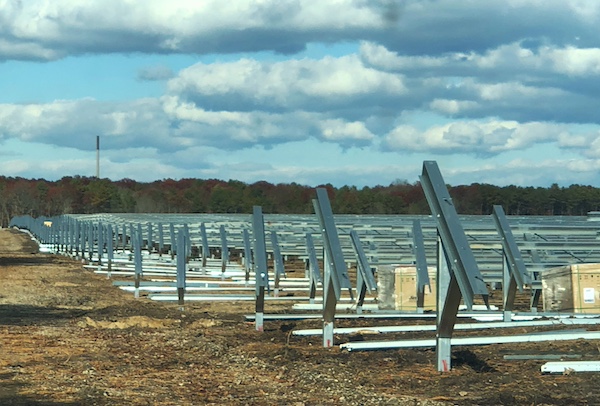
Throughout my life and career as a real estate developer in New York City, I’ve had many successes. In what is clearly one of my most unusual development projects in a long career filled with them, I initiated the building of a solar farm to help t....
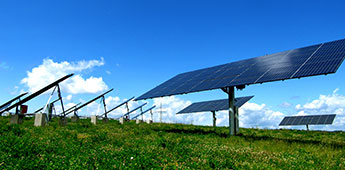
I’m just going to say it, BIPV is dumb. Hear me out…. Solar is the most affordable form of energy that has ever existed on the planet, but only because the industry has been working towards it for the past 15 years. Governments,....
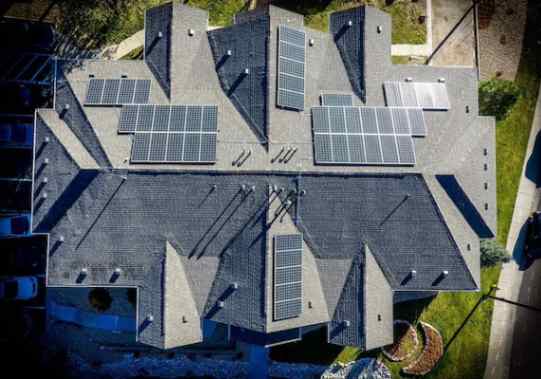
Heat waves encircled much of the earth last year, pushing temperatures to their highest in recorded history. The water around Florida was “hot-tub hot” — topping 101° and bleaching and killing coral in waters around the peninsula. Phoenix had ....
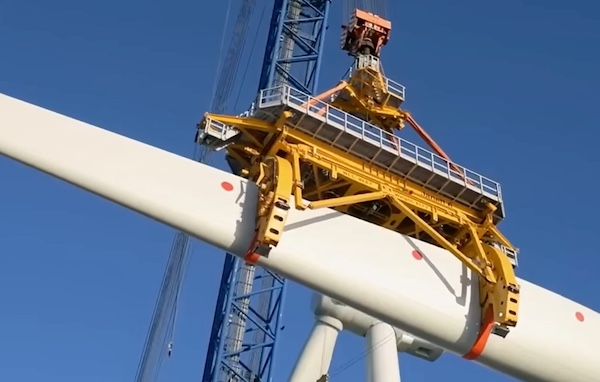
Wind turbines play a pivotal role in the global transition to sustainable energy sources. However, the harsh environmental conditions in which wind turbines operate, such as extreme temperatures, high humidity, and exposure to various contaminants, p....
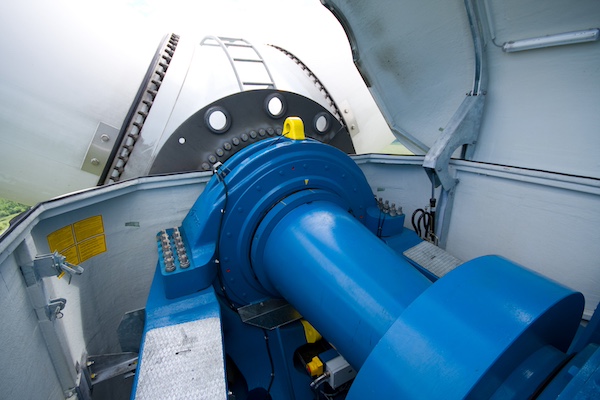
Wind energy remains the leading non-hydro renewable technology, and one of the fastest-growing of all power generation technologies. The key to making wind even more competitive is maximizing energy production and efficiently maintaining the assets. ....
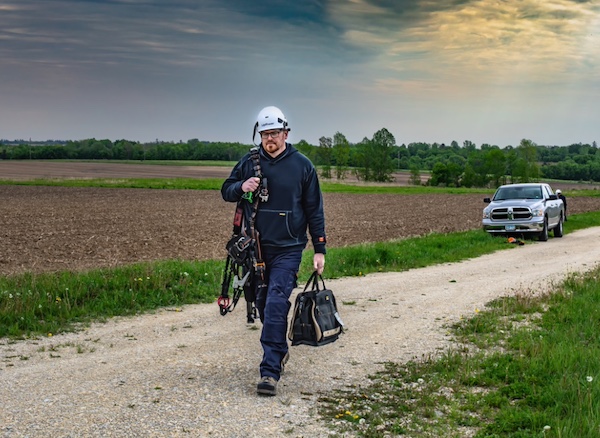
The allure of wind turbines is undeniable. For those fortunate enough to visit these engineering marvels, it’s an experience filled with awe and learning. However, the magnificence of these structures comes with inherent risks, making safety an abs....
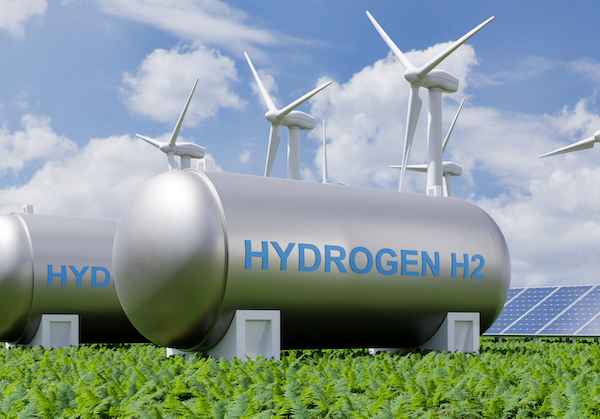
Not enough people know that hydrogen fuel cells are a zero-emission energy technology. Even fewer know water vapor's outsized role in electrochemical processes and reactions. Producing electricity through a clean electrochemical process with water....

In the ever-evolving landscape of sustainable transportation, a ground-breaking shift is here: 2024 ushers in a revolutionary change in Electric Vehicle (EV) tax credits in the United States. Under the Inflation Reduction Act (IRA), a transforma....
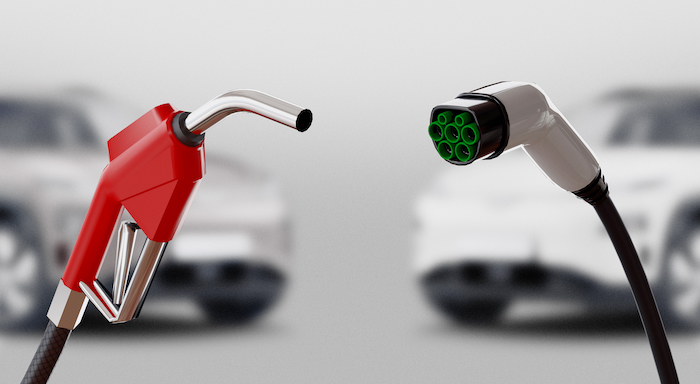
The fact that EV charging is currently cheaper than filling up your traditional gas tank has set a precedent that public EV charging will always remain less expensive. This is certainly a good thing to support the adoption of EVs, but the high infras....

Now more than ever, it would be difficult to overstate the importance of the renewable energy industry. Indeed, it seems that few other industries depend as heavily on constant and rapid innovation. This industry, however, is somewhat unique in its e....

University of Toronto’s latest student residence welcomes the future of living with spaces that are warmed by laptops and shower water. In September 2023, one of North America’s largest residential passive homes, Harmony Commons, located....
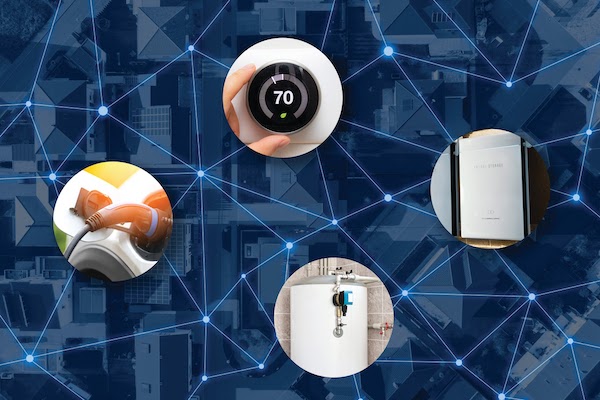
For decades, demand response (DR) has proven a tried-and-true conservation tactic to mitigate energy usage during peak demand hours. Historically, those peak demand hours were relatively predictable, with increases in demand paralleling commuter and ....